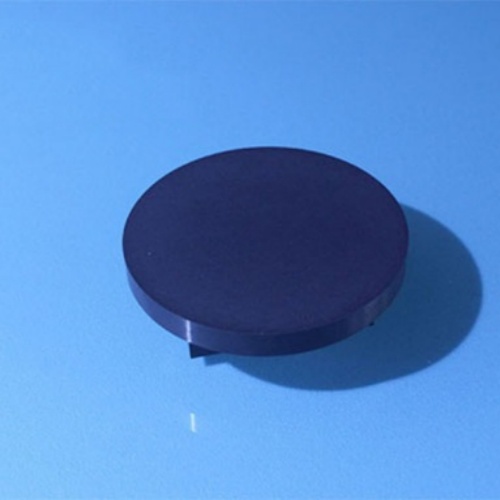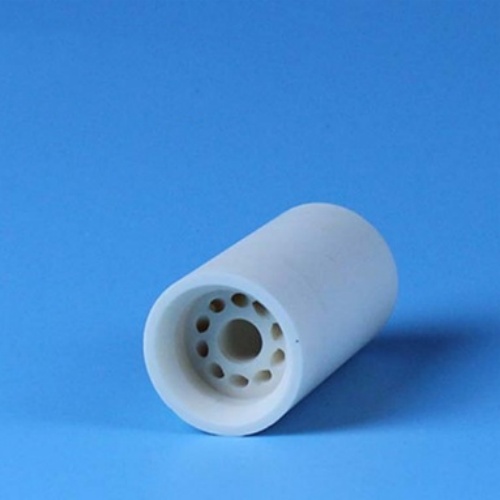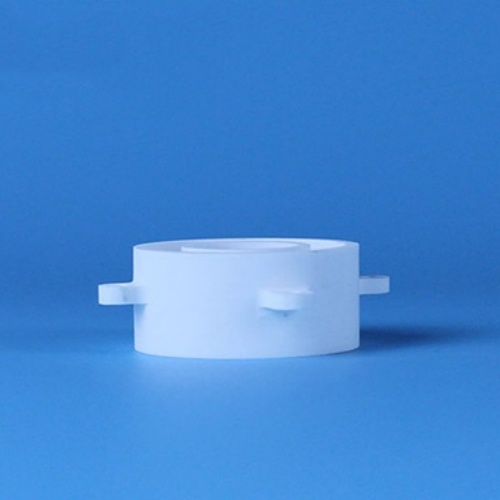Comparison of Properties between Aluminum Nitride Ceramics and Aluminum Oxide Ceramics
In the fields of modern industry and technology, ceramic materials have attracted much attention due to their unique physical and chemical properties. Among them, aluminum nitride ceramics and aluminum oxide ceramics are two important industrial ceramic materials, each with unique advantages and a wide range of application fields.

Aluminum nitride ceramic structural components
Aluminum nitride (AIN) ceramic is a non oxide ceramic material composed of aluminum and nitrogen, with high melting point, high strength, high hardness, high wear resistance, good thermal stability, and excellent thermal conductivity.
High thermal conductivity: Aluminum nitride ceramics have outstanding thermal conductivity, with a theoretical thermal conductivity of up to 320W · m ^ -1 (although it may be reduced in practical applications due to impurities and defects), far higher than many traditional materials. This characteristic gives it significant advantages in areas such as electronic device heat dissipation and thermal management.
Good thermal stability: Aluminum nitride ceramics can maintain stable performance in high temperature environments, with a melting point exceeding 2200 ℃, and maintain good electrical insulation and thermal stability over a wide temperature range (-200 ° C to+800 ° C). This makes aluminum nitride ceramics an ideal choice for high-temperature applications in aerospace, military, and other fields.
High strength and hardness: Aluminum nitride ceramics have high hardness and strength, and can withstand significant wear and impact, making them suitable for structural and wear-resistant materials in the aerospace industry.
Excellent electrical insulation performance: Aluminum nitride ceramics have high electrical resistivity and low dielectric constant, making them ideal insulation materials in electronic devices.
Good biocompatibility: Aluminum nitride ceramics also have broad application prospects in the biomedical field, and their good biocompatibility and biological inertness make them an ideal choice for implant materials and biosensors.

Alumina ceramic is a ceramic material with high bending strength and pressure resistance, widely used in various electronic products.
Wear resistance: Alumina ceramics are widely used in abrasive, ceramic, electrolyte and other fields, with excellent wear resistance, suitable for parts that are used for a long time.
Non deformable: Alumina ceramics have strong bending and compressive strength, are not easily damaged, and are excellent materials for precision parts.
Easy to clean: The surface of alumina ceramics is smooth, not easily adhered to impurities, and easy to clean, suitable for repeated use and medical fields that require hygiene.
Chemical resistance: Alumina ceramics have strong acid and alkali resistance and chemical corrosion resistance, so there is no need to worry about chemical reactions with other drugs during use.
Good insulation: High purity alumina ceramics are a very good insulation material due to their low impurities. They can withstand the voltage used as insulation materials, have low volume efficiency, and maintain insulation even at high temperatures.

Performance comparison and selection
Aluminum nitride ceramics and aluminum oxide ceramics each have their own advantages and disadvantages, and the specific choice depends on the application requirements.
Hardness and heat resistance: Aluminum nitride ceramics have superior hardness and heat resistance, second only to diamond and cubic boron nitride, and can maintain excellent strength and rigidity at high temperatures.
Mechanical properties: Alumina ceramics have high bending strength and pressure resistance, strong fracture toughness, and can withstand more loads.
Cost effectiveness: Alumina ceramics are one of the most cost-effective ceramic materials, while aluminum nitride ceramics are difficult to prepare and cannot be produced in large quantities, limiting their application in certain fields.
Thermal conductivity: Aluminum nitride ceramics have better thermal conductivity than aluminum oxide ceramics, making them suitable for applications that require high thermal conductivity, such as heat dissipation for electronic devices.

Aluminum nitride ceramics and aluminum oxide ceramics each have their own characteristics and demonstrate unique advantages in different fields. Understanding their performance characteristics and application areas can help us make informed decisions when choosing ceramic materials.
PREVIOUS:Efficient heat dissipation application of aluminum nitride ceramics in LED lighting
NEXT:What are the characteristics of Macor’s machinable glass ceramics
CATEGORIES
LATEST NEWS
- High-temperature resistance...
- What is the wear resistance...
- What is the hardness of cer...
- Aluminum oxide ceramic cust...
- What are the main aspects o...
- What are the mechanical pro...
- Thermal properties of zirco...
- What properties should be c...
- What are the mechanical pro...
- What are the main advantage...
